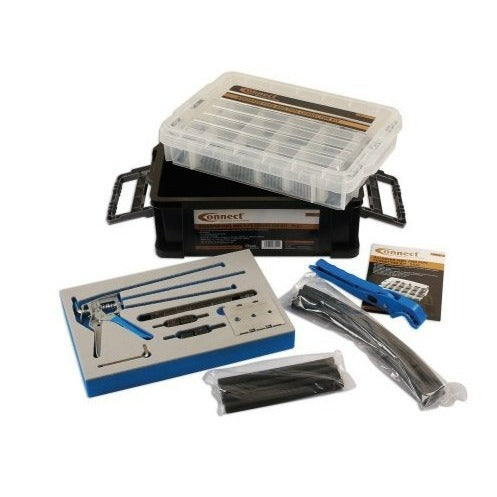Managing large amounts of data can be a daunting task, which is why many businesses turn to data management tools to simplify the process. With the rise of big data and the internet of things (IoT), the need for these tools has never been greater. One such tool is data virtualization, which allows businesses to access and manage data from multiple sources in real-time. Data virtualization empowers businesses to make decisions based on a holistic view of their data, which can improve their bottom line. At the heart of data virtualization is a technology called data connectors, which enables different data sources to talk to each other. In this blog, we'll discuss data connectors and how they work with stainless steel pipe connectors.

What are Data Connectors?
A data connector is a software component that provides a link between data sources and data consumers. It bridges the gap between the physical storage of data and its consumption by an application. A connector takes input data from one or more sources, refactors the data as necessary, and presents it in a consistent format to the consumer. In this way, data connectors enable businesses to access, analyze, and manipulate data from different sources without needing to copy or move the data.
Data connectors come in many shapes and sizes, and their implementation can vary depending on the data source they're connecting to. Most data connectors use specific protocols or APIs to communicate with data sources. For example, a data connector for a MySQL database would likely use the MySQL connector API to access the data. Similarly, a data connector for a RESTful API would use the HTTP protocol to communicate with the API.
Stainless Steel Pipe Connectors
Stainless steel pipe connectors are an essential component of many industrial systems. These connectors are used to link different components of the system, such as pipes and valves. They're highly durable and resistant to corrosion, which makes them ideal for use in harsh environments. Stainless steel pipe connectors come in various shapes and sizes, depending on the application, and can support different types of connections, such as threaded, welded, or flanged connections.
Data Virtualization and Stainless Steel Pipe Connectors
Data virtualization tools like Data Virtuality Pipes use data connectors to link different data sources, just like stainless steel pipe connectors link different components of an industrial system. It's important to note that Data Virtuality Pipes doesn't just use any data connectors - it uses over 200 pre-built data connectors that have been optimized for different types of sources and databases. This ensures that businesses can quickly and easily access their data without having to spend time building custom connectors.
In addition to its data connectors, Data Virtuality Pipes also has a range of other features that make it a powerful data virtualization tool. These features include data caching, data transformation, and data quality management, among others. In combination, these features enable businesses to access their data in real-time, manipulate it as necessary, and integrate it with different analysis tools.
Conclusion
Data virtualization is becoming an increasingly popular way for businesses to manage their data, and for a good reason. By enabling organizations to access and manipulate data from different sources, data virtualization tools like Data Virtuality Pipes can provide a holistic view of the business, which can drive better decision-making. And just like how stainless steel pipe connectors enable industrial systems to function correctly, data connectors are the backbone of data virtualization. They enable different data sources to communicate with each other, providing businesses with easy access to their data, no matter where it's stored.
